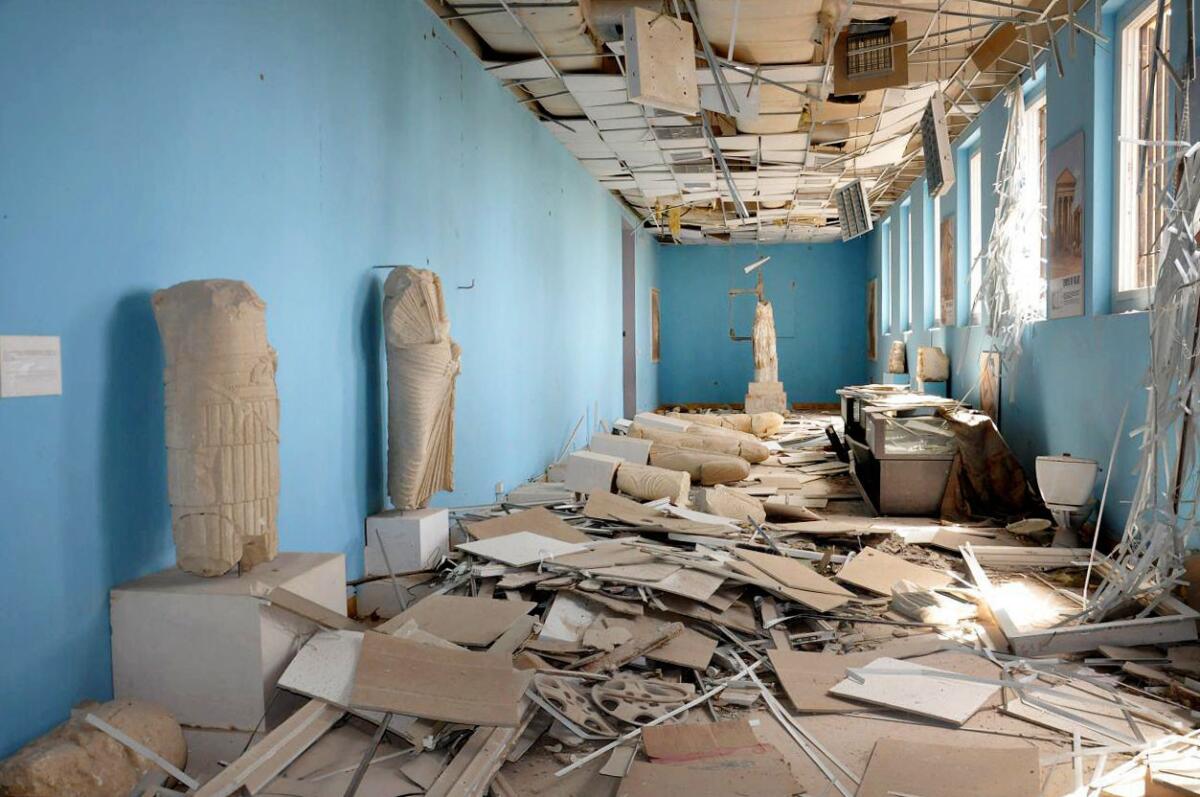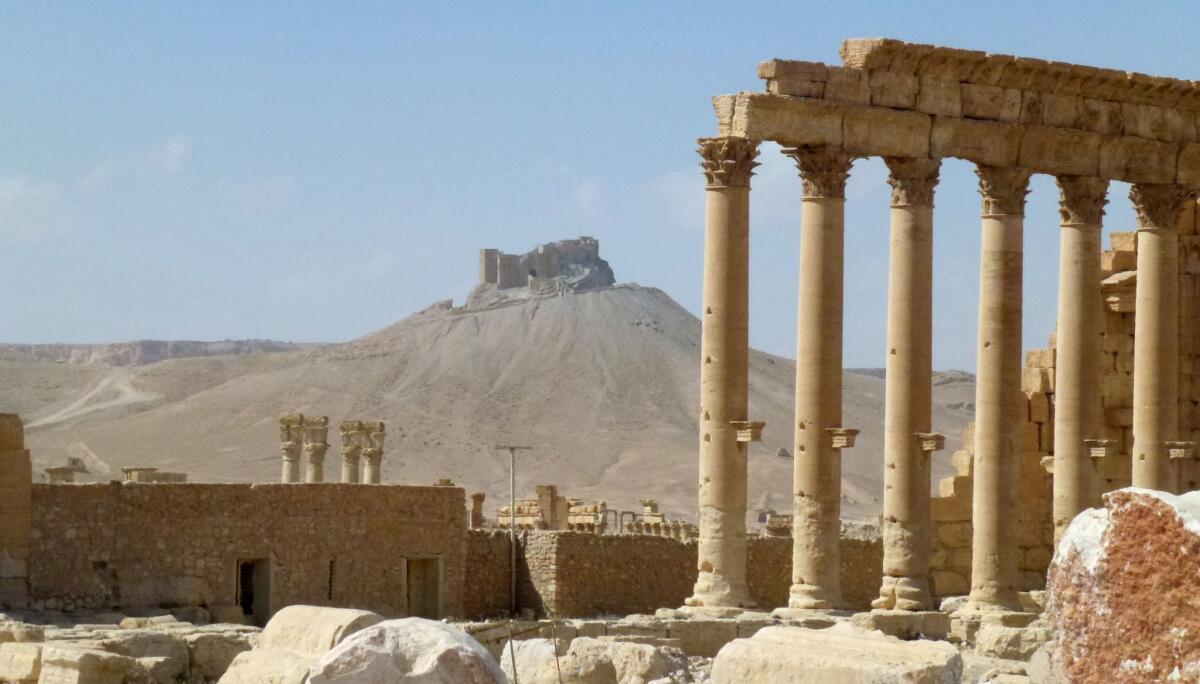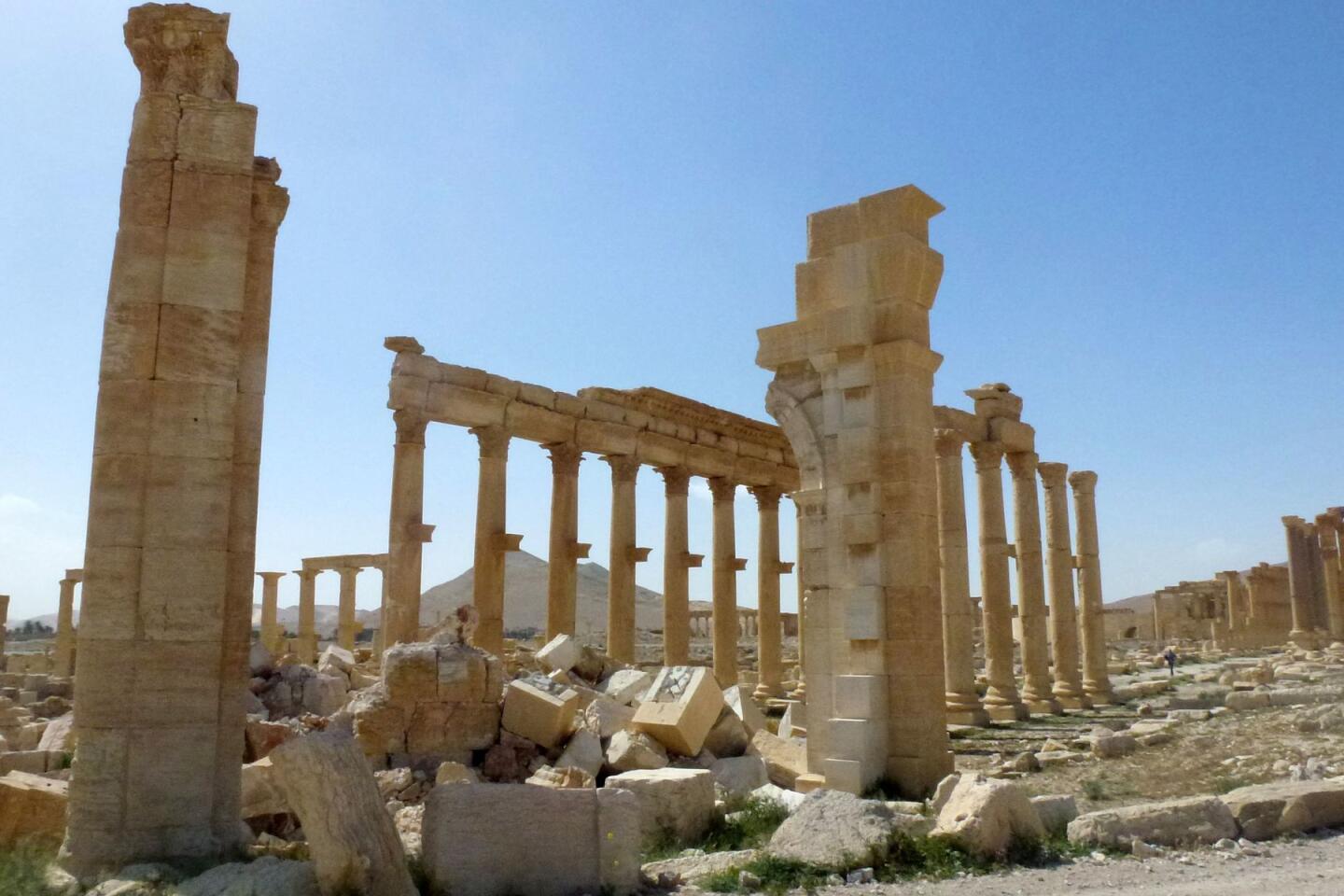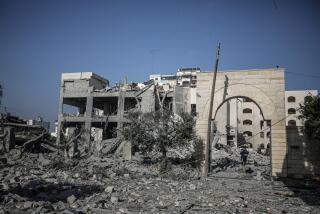Most of Palmyra’s ancient treasures appear to have survived Islamic State vandalism
- Share via
Reporting from Amman, Jordan — About 80% of the artifacts in Palmyra appear to be largely intact after the ancient city’s recapture from Islamic State militants, a jubilant Syrian official said Monday, and he estimated that restoration work could be done in five years.
The optimistic assessment came one day after the extremist group was driven from the city and Syrian officials were able to get their first look at the damage.
“I had tears in my eyes. ... I expected destruction and all the columns to be on the ground, but thank God the damage is the same as it was last summer,” said Dr. Maamoun Abdelkarim, the Syrian government’s antiquities director, in a phone interview from the Syrian capital of Damascus.
“The straight street, the baths, the fences of the two temples. ... There is damage, yes, but the panoramic view that tourists know of Palmyra remains,” continued Abdelkarim, referring to Palmyra’s spectacular colonnaded streets and other ruins that earned it the moniker the Bride of the Desert.
Islamic State militants, who had taken Palmyra in a blitz assault last May, were routed after a grueling, weeks-long offensive that saw Syrian government troops backed by Russian warplanes and special forces units pound their way into the city, encircling the extremists before forcing them to withdraw to the eastern desert region of the country.
During its occupation of the city, Islamic State destroyed some of Palmyra’s most distinctive monuments, including the famous Arch of Triumph, the temple of Baalshamin and the temple of Bal, bragging about the vandalism in photo collections uploaded to social media.
The group continued its war against the city’s heritage by beheading and crucifying Khaled Asaad, an octogenarian and retired director of Palmyra’s museum.
It also did a brisk trade in antiquities small enough to be smuggled into neighboring countries and even selling permissions for illegal excavation work to the area’s residents.
Palmyra is an ancient oasis that was an important stop for caravans carrying goods between China, India, Persia and the Roman Empire. The wanton destruction of some of its most spectacular monuments, most of them dating to the 1st and 2nd centuries, horrified historians and archaeologists around the world.

This photo released on Sunday by the Syrian official news agency SANA shows damaged statues at the Palmyra Museum in Palmyra, Syria.
Yet fears about the destruction of other monuments proved unfounded.
For instance, Abdelkarim said, a 15-ton statue dating to the 1st century and known as the Lion of Al-Lat, thought to have been the first major monument obliterated by the Islamic State, could be restored.
“It is still in the garden of the museum, but they [the militants] pushed it on its back. The damage to this masterpiece was not as disastrous as we thought,” explained Abdelkarim, a noticeable tone of happiness in his voice.
Abdelkarim added that his colleagues from the Museums and Antiquities Directorate who had spent Sunday assessing the site would soon be returning to Damascus and another team sent to examine Palmyra’s museum, where the extremists perpetrated some of the worst damage.
Images inside the museum published by Russian media outlets showed display shelves bereft of the busts and smaller items they once displayed. Bigger busts and reliefs had their faces crudely chiseled out, with their bodies and the associated columns strewn on the floor.
But even here there was cause for celebration.
“At least these items weren’t pulverized, and only their faces were destroyed – which we can also restore,” Abdelkarim said.
“It’s as if someone has a burned face: We did not lose the man, but we lost the beauty of the face. It will not return to what it used to be, but we did not lose the person.”
Islamic State considers statues depicting faces as pagan icons that violate its strict interpretation of Islamic law.
Asked why Islamic State had not razed the city, Abdelkarim surmised that it was in deference to local residents. “I think they understood that if they continued destroying temples or the theater, there would be an uprising against them,” he said.

A general view taken on Sunday shows part of the ancient city of Palmyra with the citadel in the background.
A fuller evaluation of the site was not possible while de-mining operations continued in the area to remove explosive devices left behind by the militants.
Bomb-disposal crews would be assisted by Russian engineers and robots, according to the head of the Russian general staff, Valery Gerasimov. He said the capture of the city had “strategic importance in the fight against terrorism in Syria,” according to the Russian English-language broadcaster Russia Today.
Once the antiquities assessment is complete, the results will be sent to UNESCO, which, Abdelkarim said, has already thrown its full support behind the restoration efforts. Palmyra is a UNESCO World Heritage site. Acccording to the U.N. agency, Russia will send experts from the Hermitage Museum in St. Petersburg to assist with repair work.
Abdelkarim described the work as including cleaning, restoration of the 13th century Palmyra castle and reconstruction of the city’s two ancient temples. “We will hopefully need five years, no more,” he said.
But some experts cast doubt that the site could be fixed in such a short time.
“The biggest challenge is documentation. The Syrians’ ability to restore these artifacts depends on the documentation they had beforehand, before it was destroyed,” Tammam Khasawneh, a museum environment specialist at the Jordan Museum in Amman, said in an interview.
“The temple of Bel; we’re lucky because it’s well known. But there might be a smaller temple that is not so well studied. We wouldn’t know what the decorations were because it was not well documented. Then it’s extremely difficult to bring things back to how they were,” he said.
Khasawneh added that the fighting could have damaged the site, even if the Syrian army avoided firing directly at the artifacts.
“Vibrations from bombs and shells can be felt miles away,” he said. Smoke from ordnance could create an acid residue that could eat away the stone ruins, he added. “We’re talking about something that is 2,500 to 3,000 years old. ... Imagine how fragile these things are.”
Complicating any restoration effort will be the continuing battle for control of the country. International organizations may not be able to send experts to help, he said.
Khasawneh estimated that the restoration process could take 25 to 30 years and would never fully restore all that was lost.
“The sad and painful confession is that we won’t be able to bring things back to what they were. If we can do 15-20%, then that is something,” he said.
Bulos is a special correspondent.
More to Read
Sign up for Essential California
The most important California stories and recommendations in your inbox every morning.
You may occasionally receive promotional content from the Los Angeles Times.












